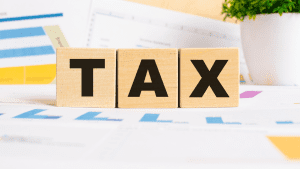When someone asks us if they should buy or lease their next vehicle, their real questions are:
1. Would buying or leasing provide the best deduction on my income tax return?
2. What’s the math involved, and do I need to consider anything besides the straight dollars and cents?
CASE STUDY
“Tom” has been Senior Sales Manager for his Southern California company for eight years, and 
Fortunately, that rarely happens.
He’s had a booming sales year. So far, he has seen the biggest year-over-year increase in his client listings since he’s owned the company. As he’s going out and visiting with more people, he thinks it’s time for a newer, higher status car, maybe, but he doesn’t don’t know if he should buy or lease.
Tom uses his car for business sales calls, but also drives it on the weekends with his family and sometimes takes it on longer trips. However, the company also has a pickup truck that they use for deliveries when they’re short of drivers, or even for a favor for a really good customer. The reason this is important is to establish how many business miles Tom puts on his car and whether he uses it more than 50% of the time for business.
Relevant Variables:
We take many variables into account; some of which are strictly quantifiable, and some that speak more to the client’s personality. For this case, the relevant numbers are:
1.) The increase in the taxable income for the company this year.
2.) The amount of business driving on the car.
However, other factors might be:
1.) How much ‘status’ they want to project based on the car they drive.
2.) How long the client likes to keep cars.
For Tom’s proposed new car, we’ll compare his deductions using the Immediate Short-Term versus the Consistent Long-Term projections.
BUYING: Immediate Short-term
Buying a new car this year will give Tom a significant deduction with smaller deductions in the following years until the vehicle is paid off. Since he has had such a good sales year, his tax bill is going to be higher.
With the latest round of income tax changes, the depreciation for a purchased vehicle—weighing less than 6000 pounds, as for a regular passenger car—went up quite a bit. In the first year, companies can write off up to $18,000 in accelerated depreciation against income depending on their usage. They must use the vehicle for business more than 50 percent of the time to use accelerated depreciation. There are other ways to calculate the depreciation, so this is only one possibility.
LEASING: Consistent Long-term
Leasing the vehicle offers small deductions that are consistent throughout the term of the lease. In this situation, the lease deduction will be lower, but consistent from year to year. If a company didn’t have a real need for the extra deductions in this tax year, we might recommend leasing because it evens out the deductions year after year, and offers more opportunities to trade in for a new car with the latest technology, leather interior, or perhaps even a new color.
However, putting a lot of miles on leased cars for salespeople with large territories can be costly, as leases carry mileage limitations that penalize renters for going over whatever mileage is in the contract. Sometimes this is a huge stressor for business people.
BUYING Calculation Example
Under the new tax law, the accelerated depreciation is $18,000 in the first year. If Tom buys a car for $35,000 and uses the vehicle more than 50% for business, he could possibly take the full $18,000 against income. In Tom’s case, we would look at the difference of his tax liability with and without the accelerated depreciation. He will have to make a down payment on the purchased car, which cuts into cash flow. We would look at that as well. Do the numbers crunch?
LEASING Calculation Example
If Tom leases that same car, and he puts down 10% ($3,500) on a $35,000 car, the lease payments might be around $525/month (depending on trade-in, down payment, interest rates, etc.) for three years or $18,900. But he only gets the write-off for one year’s lease payments that first year, that is $6,300 plus the down payment or $9,800. However, the $6,300 would be the same every year for the term of the lease. It’s consistent. For planning purposes, it’s great.
Buying vs. Leasing Personality Types
People are different. We understand that even if the numbers fall one way or another, behind each balance sheet and income statement, there are people that have different needs and wants. A person valuing their car as an extension of their personality may want to purchase and keep the car regardless of the tax consequences. Others want new “wheels” every three years. Tom has his eye on an electric car. How do we know? He told Mike when they were playing roller hockey one day. Tom lived to tell about it, too.
In all cases, we try to make accounting more than debits and credits and financial statements.
The Bottom Line
Keep in mind that every case is different, and there is no ‘black and white’ in accounting.
BUY if you are looking for a large tax deduction in the first year, and then smaller deductions in the years following.
LEASE if you want lower deductions that are consistent throughout the term of your contract.
CONTACT US before you do ANYTHING! Things change quickly these days. We want to help you make the right decisions—ahead of time.
“The only constant is change.”
— Heraclitus, a Greek philosopher




